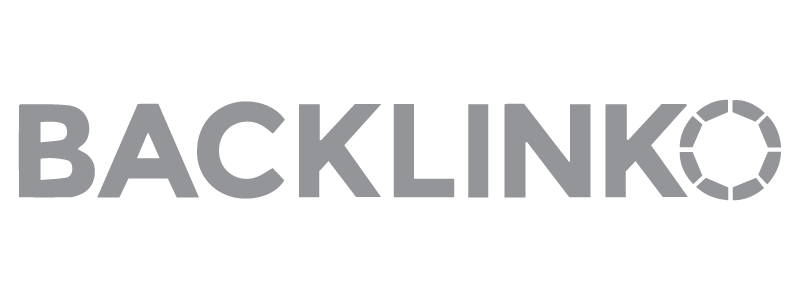If you are an artist and want to sell your own handmade products, navigating the ecommerce space can feel overwhelming – especially with all of the different platforms available.
Amazon and Etsy are both massive sites with consumer trust behind them, making them viable options for creative types.

When looking at Amazon Handmade vs Etsy, both have their own pros and cons. The best one for you will depend on your exact business when you’re making the goods you sell (as opposed to using a manufacturer).
Learn more about all of their features with this Etsy vs. Amazon Handmade comparison guide before you start your ecommerce business. We’re covering the audiences, pricing, and fees, and the best types of products to sell on each.
Amazon Handmade 101
Did you know that Amazon has its own platform for artisans, custom items, and handcrafted goods? Amazon Handmade is the ecommerce giant’s Etsy competitor. While Amazon Handmade functions within the main Amazon platform for shoppers, it works a little differently for those looking to sell on Amazon.

Size, History, & Users
Amazon launched Amazon Handmade in October 2015. Amazon launched Handmade in order to help customers support more small businesses and artisans.
Amazon Handmade is available to all of Amazon’s 200 million Prime members. There are more than 6 million sellers in Amazon’s marketplace, which includes Amazon Handmade.
Amazon Handmade Overview
Amazon Handmade is a makers-only marketplace for handmade goods. Amazon Prime members can take advantage of Prime 2-day shipping on Amazon Handmade. Sellers can access custom or handmade accessories, artwork, baby, beauty products, and more in the Handmade department.
Artisans have to apply to join Amazon Handmade. This application process is to audit each seller to help build consumer trust.
Unlike most Amazon products, goods purchased on Amazon Handmade are not mass-produced. Sellers here must have a team of 20 people or less.
Etsy 101
Etsy is a well-known and established online marketplace for crafters to sell art and other homemade products. Users search within the Etsy platform to look for handcrafted items and vintage finds that are at least 20-years-old.

Size, History, & Users
Etsy launched in 2005 for people specifically looking for handcrafted or vintaege items. Etsy’s grown tremendously since then.
Etsy last reported quarter 2023 Q1 the seller base was 5.90 million, up by 7% year-over-year from 5.50 million. The user base was 89.90 million, up by 1% year-over-year from 89.10 million.

Etsy Pattern Overview
Pattern by Etsy allows sellers to create their own website. It instantly syncs to your listings with its website templates. Etsy’s shop manager allows you to manage both your Pattern site and Etsy store in one place.

Your Pattern shop operates independently from your Etsy shop. This means that Etsy users won’t be able to find your site through Etsy. It’ll be up to you to drive traffic to your ecommerce business site.
Best Places To Sell Handmade Items Online
Not all online marketplaces for handmade goods are created equal. But the best one for you is going to depend on what you’re selling and how much of it you plan to sell.
What Type Of Products Can You Sell?
There are tons of different products you can sell so long as they’re handmade. The exact specifications will depend on the platform.
Amazon Handmade
There are a few different product categories for sellers on Amazon Handmade, which are limited due to their stricter policies. The products you can sell on your Amazon Handmade shop include:
- Jewelry and watches
- Baby products
- Home decor and outdoor care
- Kitchen and dining
- Beauty and grooming
- Handbags and totes
- Stationary and party supplies
- Clothing, shoes, and accessories
- Toys and games
- Sporting goods

All of your products have to be either genuinely handmade products, hand-altered, or completely assembled by hand. If you want to sell mass-produced products, it’s simply not allowed.
Etsy
Similar to Amazon Handmade, Etsy is designated for selling handmade products. Everything in the Handmade category on Etsy must meet these rules:
- You physically made or created the original design featured on the items.
- You use your own photography in the listing.
- Every person involved in making the item(s) is included in your shop’s About section. Production partners need to be disclosed in their relevant listings.
Jewelry, clothing, accessories, art, pet supplies, stickers, notebooks, and home decor are all extremely popular on Etsy. Vintage items and craft supplies are also acceptable listings, plus are the only two things you can resell.
Many shops utilize print-on-demand product listings for shirts, mugs, and more. A great example of this is customized gifts for bachelorette or wedding parties.

People on Etsy also sell digital files. For example, a seamstress who makes their own clothing can sell the files to a pattern on Etsy for others to download and print out.
A Few Other Options
There are other places to sell your handmade goods or crafts. These include:
- ArtFire and Storenvy are both indie marketplaces focusing on vintage products, craft supplies, and handmade products.
- Zibbet specializes in handcrafted goods, art, photography, craft supplies, and vintage goods.
- Bonanza is an online marketplace similar to eBay and Amazon.
- Spoonflower allows artists to sell their designs as patterned fabric.
- eCRATER has a crafts category featuring 17 different product types you can choose from.
- Redbubble, Cafe Press, and Zazzle both allow designers and photographers to upload their art to sell on clothing, accessories, and mugs in a print-on-demand style setup.
Pros and Cons Of Selling On Amazon
While being able to reach Amazon customers as a handmade seller is very attractive, there are other factors you need to consider. Here are the pros and cons of selling on Amazon Handmade.
Amazon Handmade Pros
One of the obvious pros for Amazon sellers with handmade arts and custom products is the ability to tap into Amazon’s vast customer base. This includes Prime customers. In fact, 33% of Amazon Handmade sellers saw profit margins of 20% or higher according to the 2021 State of the Seller Report.
On Amazon Handmade, you can customize your shop profile to best suit your brand and needs. Amazon Handmade also lets you create a seller profile so you can share your story and connect with shoppers on a personal level. The Maker profile is similar to Etsy’s Pattern but operates directly within Amazon.

Another advantage is that your listings never expire on Amazon Handmade. No UPC codes are needed!
Amazon Handmade Cons
Because Amazon wants to make sure your products are handmade, the application process can be slow. This sometimes takes up to two weeks.
As far as payment goes, your money is not available until your order is marked as shipped. Then, the payment goes out to sellers biweekly.
Also, the Amazon Seller Dashboard can be a bit confusing to navigate. If you’re new to the ecommerce world, it might take a while to get accustomed to it.
Pros and Cons Of Selling On Etsy
Etsy is a popular choice for handmade retailers – and for good reason – but everyone’s experience is different. Here are some pros and cons to selling on Etsy.
Etsy Pros
Etsy also has a large audience you can market to. While Amazon has more overall users, Etsy customers are on the platform looking specifically for things in the handmade or vintage item niche.
Etsy shops are very easy to set up and maintain. Their dashboard is straightforward which makes for a user-friendly experience. Their Seller Handbook also helps you navigate the dashboard and all of the tools available to you.
If you have multiple production partners, you can list these on Etsy. It’s required to include them in the listing, but it’s not as limiting as Amazon’s 20 people or less rule.
Similar to Amazon, you can list as many items as you want and don’t need to worry about UPC codes.
Etsy Cons
Unlike Amazon, your listings will expire after four months. However, you can set listings up to automatically renew.

The competition on Etsy is also tough, especially if you sell jewelry, clothing, decor, and crafts. Etsy’s seller base is only going to keep growing and is currently at 5.9 Million.
Etsy also has a lot of fees associated with your listings to be aware of.
Is Etsy Cheaper Than Amazon?
You may be wondering if the Etsy marketplace or Amazon Handmade is cheaper to sign up for. It ultimately depends on what you’re selling and how much you’re selling due to the different fees associated with the platforms.
Etsy Pricing and Fees
It’s free to join and set up an Etsy account. However, they have a lot of basic fees that sellers should know about before they start selling.
- Listing fees: There is a $0.20 listing fee for each item that you put on Etsy. There isn’t a fee for updating your listings or items that are only available via your Etsy Pattern site. If you have multiple quantities of one listing, the $0.20 fee will renew after each one sells.
- Transaction fees: If you make a sale, there’s a 5% transaction fee of the price of the item plus shipping and gift wrapping costs.
- In-person selling fees: You can integrate Square with Etsy to sell your listings at in-person events. If you don’t sync your listings, you’re charged a $0.20 transaction fee. For listings that are synced, it’ll be the same $0.20 renewal fee you’d pay for an online sale.
- Payment processing fees: If you use Etsy Payments, you’ll pay a fee that varies based on your bank account’s location.
- Currency conversion: If you use Etsy Payments and list a price in a currency other than your payment account currency, you’ll pay a 2.5% currency conversion fee.
- Pattern by Etsy fees: Pattern is free for the first 30-days. Once your free trial is up, it’s a $15 monthly subscription.
- Subscription fees: Etsy sellers in good standing have the option to join Etsy Plus. This is an optional subscription service costing $10 per month. Etsy Plus offers additional tools for growing ecommerce stores, including listing credits, ad credits, and discounts on custom domains.
- Offsite ads: There is no fee to have your ads listed off of Etsy. But you’ll pay 12-15% if someone clicks on your shop from an offsite ad and then makes a purchase.
More on Offsite Ads
There are some pros and cons to Etsy’s off-site ads, which are featured on websites, with publishers, big-name bloggers, and social media influencers.
Etsy runs offsite ads featuring top-selling content. The offsite ads can bring a ton of traffic to your shop and boost your sales. These ads are often featured on Google, Pinterest, and Instagram. Etsy also says that these ads can get your products placed in Buzzfeed, Real Simple, and/or Martha Stewart articles.
A downside to offsite ads is that you are automatically enrolled, so if you don’t want to pay those fees, you have to opt out. The catch is that opting out is only available for business owners who sell less than $10,000 in 365 days. So if you’re a new shop, this might not be an issue, but if you get a lot of sales, be prepared for some fees to hit.
Amazon Pricing and Fees
If you want to sell on Amazon Handmade, you’ll need a Professional selling account. An Amazon Professional selling account costs $39.99 per month. However, Amazon will waive the fee for your Amazon Seller Central account if your application to join Amazon Handmade is approved.
There are no listing fees or subscription fees. However, Amazon charges a 15% fee per sale. This might sound like a lot, but if you’re making a lot of sales through Etsy offsite ads, then you’re looking at comparable pricing.
How Does Shipping and Fulfilment Work?
Both Etsy and Amazon offer tools to make order fulfillment and shipping easier for sellers.
Amazon Handmade Shipping & Fulfillment Options
If you sell on Amazon Handmade, you have two shipping options.
You can opt to sell with Fulfillment by Amazon. With Amazon FBA, Amazon will fulfill and ship orders for you. Plus, Amazon FBA allows you to offer your products with Amazon Prime shipping.
You can also ship orders yourself through Fulfilment by Merchant (FBM).
Etsy Shipping & Fulfillment Options
Etsy sellers are responsible for fulfilling and shipping their orders. However, Etsy partners with the United States Postal Service, FedEx, and Canada Post to help streamline order fulfillment.
Etsy Shipping Labels let you get up to 30% off postage rates when you create your labels directly within the platform. Once you purchase your label, Etsy will automatically mark your order as shipped.
Sellers don’t have to use this service. Most sellers do not offer free shipping here unless customers hit a price threshold. If you’re moving a lot of orders, looking into a separate fulfillment service may be beneficial for you.
FAQs
Amazon Handmade vs. Etsy: Which One is Right for YOUR Shop?
If you’re selling very specific handmade items and want to avoid listing fees, then Amazon Handmade might be a better fit for your online store.
But if you want a bit more flexibility in your online marketplace and don’t mind a few small fees to get set up, then Etsy is a great choice for your store.
It also will depend on how important it is to you to have a separate dedicated storefront outside of Etsy or Amazon. If you want your own site to drive traffic to, then having a Pattern by Etsy account alongside your store is an easy way to integrate.
Either way, you’ll need to practice search engine optimization to see success on either site. Amazon SEO is all about staying up to date with the algorithm and using the right keywords in your product description. Without strong Amazon SEO in your description, you’re not as likely to rank on the first page or two when people look up your artisan items. You’ll want to write strong product descriptions on Etsy, too, to stand out among the competition – especially if you launch your own site with Pattern by Etsy.
Have you tried Amazon Handmade or Etsy for your store? Let us know in the comments!









